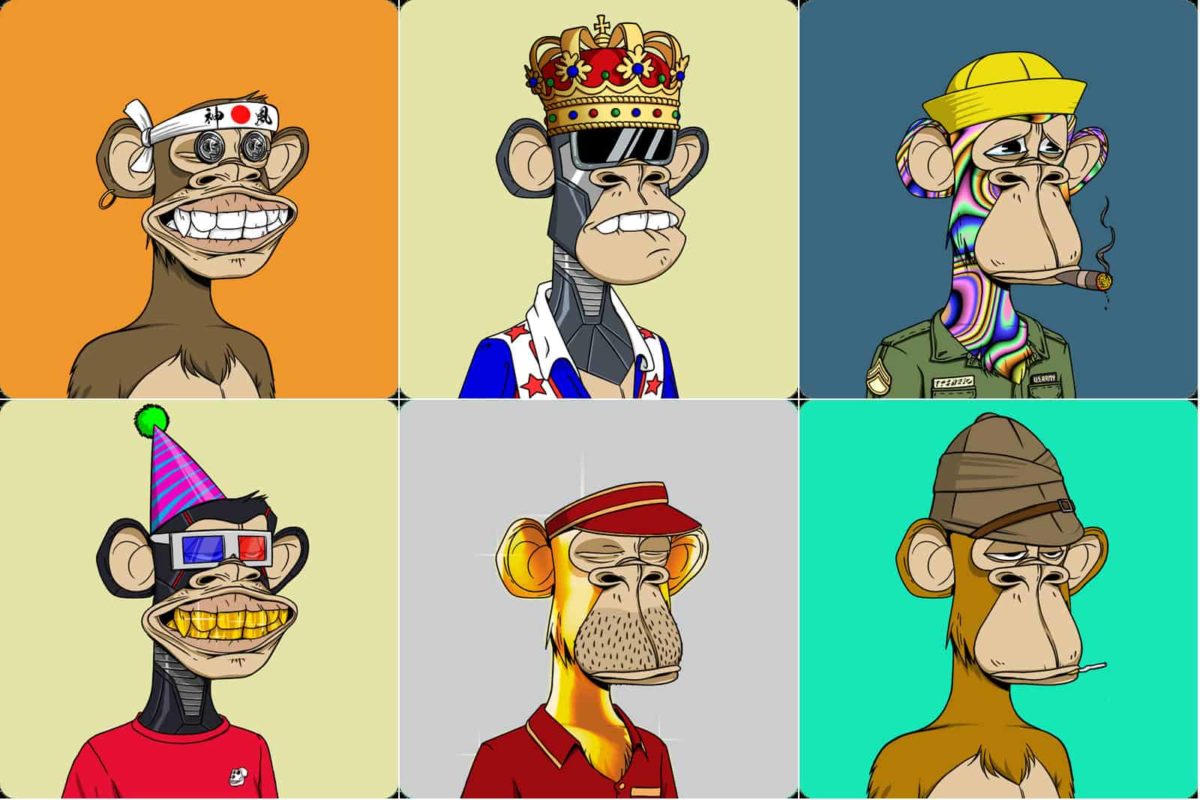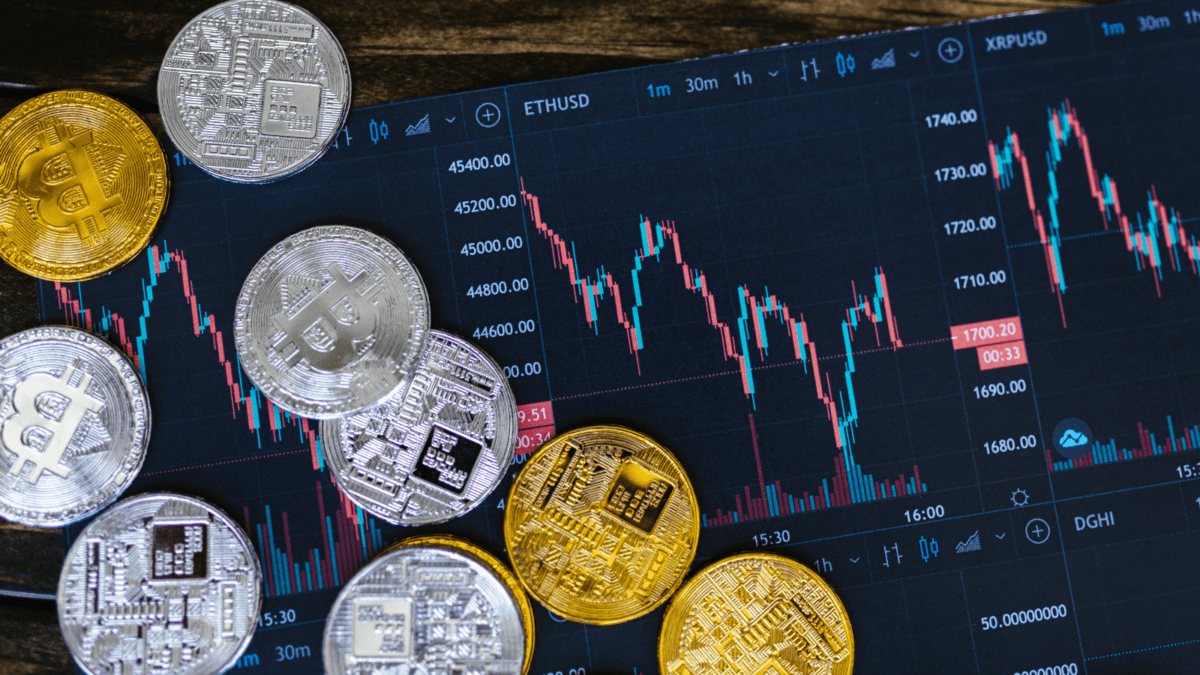What is an NFT? Non-Fungible Tokens Explained
The NFT market had a breakout year in 2021, and there’s still heightened interest in this digital asset class despite unfavourable market conditions. But are NFTs worth the money-or the hype? Some experts say it’s a bubble bound to pop. Others believe NFTs are here to stay, and that they will change the landscape forever.
Keeping up with innovations in the blockchain space isn’t easy. Let’s take a dive into NFTs, what they are, how they work, and how they’re being used.
What is an NFT?
NFTs are non-fungible tokens. Fungibility refers to assets of the same kind that can be traded interchangeably. With money or crypto, you can swap a $5 note for a $5 note or trade one Bitcoin for another and it will be the exact same asset.
However, if something is non-fungible, it has unique properties and can’t be easily replaced or used interchangeably with something else. Since NFTs are non-fungible, each token is unique and cannot be replicated. Because of this distinct feature, NFTs are represented as unique information on a blockchain, safeguarding the integrity of digital ownership. This record of original ownership cannot be altered, since its existence is time-stamped on the blockchain.
NFTs have exploded in popularity as a way for creators to monetize their work in a way that wasn’t really possible before. Artists are also guaranteed intellectual property rights in their creations and a percentage of the proceeds every time their NFTs get resold. Each NFT represents either a physical or digital asset. Aside from art, this can be anything from intellectual rights to in-game items, music, videos, and even memes.
Anyone can view these cartoon apes for free. So why are people willing to spend millions on something they could easily screenshot or download?
Because an NFT allows the buyer to own the original item. It contains built-in authentication, which serves as proof of ownership. Collectors value those “digital bragging rights” almost more than the NFT itself.
NFTs are unique in the fact that ownership cannot be replicated or manipulated. When an item is limited, it becomes more valuable. Just as you can go online and download a Leonardo da Vinci painting, the replicas or copies will never be worth anything close to the verified originals. You can even download an image hundreds of times, but they are all irrelevant because you don’t own the unique address that verifies that you own the original artwork.
NFT holders get exclusive ownership rights. Even if you create 10,000 copies of the same image or file and mint the same number of NFTs to represent ownership of them, each copy of the image will be uniquely identifiable from the other 9999 pieces based on the special type of information (i.e., metadata) that each NFT token contains.
Think of it as an edition of a trading card with 10,000 exclusive copies, but where each card has its own serial number to distinguish it from others. Taking this concept even further, NFT artists incorporate different traits of varying degrees of rarity to further increase the value and scarcity of specific pieces.
How do NFTs work?
We’ve already established that in order to be able to prove ownership of digital assets, there needs to be some kind of transparent, immutable ledger that maintains a record of all NFTs. This is where blockchain technology comes in. Each token points towards a link of metadata that stores that NFT. Once created, the blockchain ledger records the NFTs and their unique identifying codes. The ledger also records every sale, resale and new ownership.
By leveraging the immutable, publicly distributed nature of blockchains, NFTs can be stored in a transparent way, allowing anyone to prove ownership of any NFT at any given time. Each mint, sale, or transfer of an NFT is recorded on the blockchain and timestamped, meaning anyone can trace any single NFT back to its genesis.
Most NFTs are built using Ethereum token standards ERC-721 and ERC-1155. These are just frameworks developed by Ethereum that allow developers to deploy NFTs that are compatible with the broader ecosystem. In other words, they can be incorporated with many different wallets and exchanges. Though Ethereum was the first to be widely used, the ecosystem is expanding, with blockchains including Solana, NEO, Tezos, Flow, AVAX, and TRON also supporting NFTs.
Why do NFTs have value?
Like all assets, supply and demand are the key market drivers for NFT prices. They’ve fashioned a new market to create wealth, with high growth potential. Due to the scarce nature of NFTs and the high demand from investors, collectors and gamers, some people are prepared to spend incredible amounts of money for sought-after pieces.
For instance, famous contemporary digital artist Mike Winklemann, widely known as “Beeple” crafted a composite of 5,000 daily drawings to create perhaps the most renowned NFT of all time: EVERYDAYS: The First 5000 Days, which sold at Christie’s for a record-breaking US$69.3 million.
After Beeple’s sale, the whole market went mad, not only for 1-of-1 art or generative art (ArtBlocks) but also pfp collections like CryptoPunks and Bored Ape Yacht Club.
As we spend more time online, NFTs offer a way to showcase wealth and influence within the online environment in a way similar to traditional social settings. In the real world, people might buy a Patek watch or a Lamborghini to flex their status, now people are starting to do that with their digital profiles. And today that is taking the form of a “pfp” (profile picture) or the image you use on Instagram or Twitter.
Owning a Bored Ape NFT, for example, is a flex and unlocks exclusive benefits like access to discord and community events that even your favourite celebrities attend. This membership puts you in a common club with high-profile celebrities such as Steph Curry, Eminem, Neymar, Post Malone, Mark Cuban and Shaquille O’Neal among others.
Yuga Labs managed to create a collaborative, open culture. They managed to build on the initial hype by introducing more to the ecosystem; including but not limited to, free airdrops of Bored Ape Kennels and Mutant Apes to BAYC holders, and in March 2022 – the APE coin. The airdrop of $APE tokens to each BAYC and MAYC holder amounted to more than $25,000 for MAYC and $100,000 for BAYC holders.
Are NFTs worthwhile from an investment perspective?
From an investment perspective, buying an NFT is even riskier than buying crypto because it’s somewhat like a leveraged bet on crypto. It’s essentially gambling but the line is pretty blurred as crypto investors are known to be much more aggressive than the average investor anyway.
Buy low and sell high also apply for NFTs. Market participants can buy NFTs and flip them for a profit if interest in the project grows. However, NFTs should be thought of as an investment that could go to zero and is pure speculation.
NFTs are not like a stock or any investment security where we have a quantifiable idea of the intrinsic value of the investment aside from its market value. Its market value is driven purely by what the NFT community is willing to pay for it. A successful NFT project is similar to a strong brand, and a lot of value is given to it by other people, so it’s only as valuable as someone else is willing to pay for it.
Some NFTs can provide investors with greater growth opportunities, depending on their applications. NFTs with real-world utility, like real estate contracts, or virtual land in the Metaverse, will ultimately hold greater value in the future.
For the average investor, I think it’s generally a bad idea to invest in NFTs unless you have a solid grasp of NFT trading, or you just want to buy it for the art, and you’re totally fine with never seeing that money again.
About 5% of traders earn 80% of all profits, and these traders tend to be the most sophisticated, trade with the most capital, buy and sell the most expensive NFTs, trade very often, and hold a larger portfolio of NFTs. Therefore, the average investor wouldn’t stand a chance here.
So, are NFTs here to stay or simply a fad?
While these outrageous 7-figure NFT purchases may seem fickle, there’s no denying NFTs’ long-term potential. NFTs’ non-fungible nature has completely redefined the rules of ownership, and its use case stretches far beyond just digital collectibles.
Although still very much in early development, linking real-world assets with NFTs is something that could pop off soon. Prospective use cases include verifying the authenticity of luxury products, collecting royalties for musicians, transferring land deeds, maintaining transparency within supply chains, protecting intellectual property and patents, and more!
It’s the technology behind the scenes of NFTs – the technology that can create digital scarcity and ownership – that offers real value. The flipping of JPEGs on Opensea is just a showcase of what it can do at a very surface level. While there could be interesting potential for the technology in the future, right now it can seem like NFTs are just a bunch of crypto bros flipping JPEGs on discord.
The full extent of NFTs and their potential are yet to be imagined. It is undeniable that this space is immensely resilient in creating new markets, augmenting existing markets and raising the bar for market integrity and authenticity of assets. NFTs will definitely still be around in 10 years. How much we use them – that I don’t know. People will always find some value in new technologies, but the broader applications of NFTs will be more interesting.









